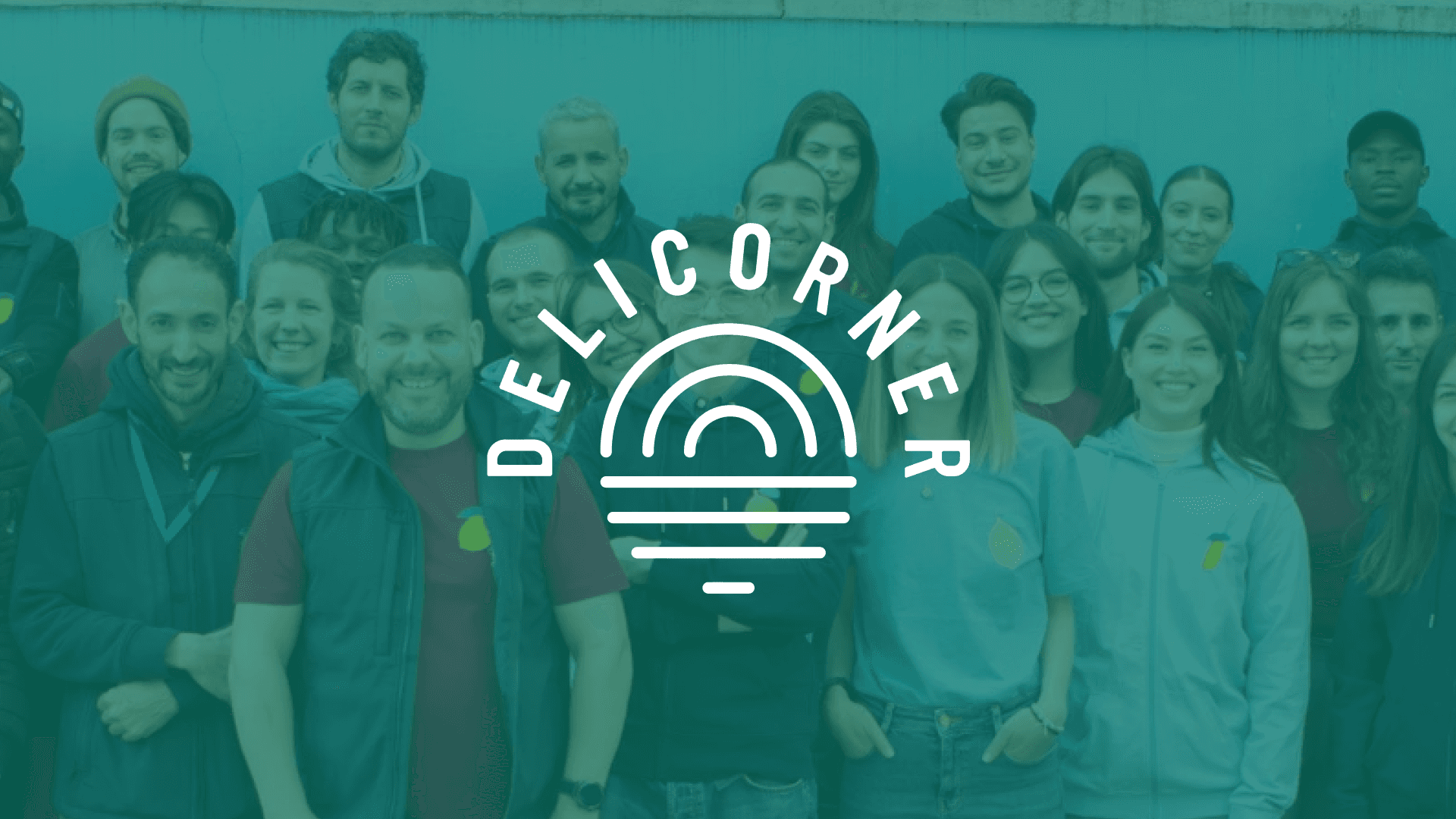In today's rapidly shifting product management landscape, creativity stands as the linchpin that can elevate a product from being merely functional to truly exceptional. With the relentless march of technology and escalating user expectations, product managers find themselves at the crossroads of innovation and relevance. This necessitates not just an understanding of the product lifecycle or the intricacies of a go-to-market strategy, but an innate ability to think creatively, to envision what lies beyond the horizon.
This article aims to shed light on the pivotal role of creativity within product management. We will delve deep into its multifaceted importance, elucidate actionable techniques, and underscore the transformative impact it can have on product strategy and roadmap development. Furthermore, we'll spotlight how Jimo, with its avant-garde approach, is at the forefront of this creative paradigm shift. By integrating user feedback, iterating on user stories, and emphasizing a stellar user experience (UX), Jimo exemplifies how creativity can be seamlessly woven into every facet of product development.
But why is creativity such a game-changer in product management? How does it intersect with stakeholder management, product vision, and the creation of an MVP (Minimum Viable Product)? And more importantly, how can product managers harness this creativity to not only meet but exceed user expectations?
As we embark on this exploration, we'll also touch upon the nuances of product design, the challenges of market research, and the strategies for effective competitive analysis. The journey promises to be enlightening, offering a fresh perspective on the symbiotic relationship between creativity and product management.
So, are you poised to delve into the transformative world of creative product management and discover how platforms like Jimo are reshaping the narrative? Let's begin.
Why is Creativity the Heartbeat of Product Management?
In the intricate realm of product management, where the product lifecycle is constantly evolving and the product strategy is perpetually under scrutiny, creativity emerges as the indispensable compass guiding product managers through this journey.
The Changing Landscape of Product Management
The digital age has ushered in a paradigm shift in the way products are conceived, developed, and launched. With the acceleration of technological advancements, the product lifecycle has become more dynamic than ever. The traditional linear approach, where products moved systematically from conception to launch, is now being replaced by a more agile and iterative process. This rapid evolution demands a fresh perspective, one that is not just rooted in technical know-how but is also creatively charged.
Creativity, in this context, is not only ideation or brainstorming sessions. It's important to be envisioning the unforeseen, anticipating user needs even before they articulate them, and crafting product strategies that are both innovative and viable. You can look at the roadmap not just as a sequence of product releases but as a fluid narrative that can be tweaked, pivoted, and optimized based on real-time user feedback and market research.
Moreover, with the increasing emphasis on user experience (UX) and product design, creativity has become the linchpin that ensures products are not just functional but also delightful. It's the bridge between product development and product launch, ensuring that products resonate with users and stand out in a crowded market.
The Direct Link: Creativity and Product Success
The records of the tech industry are full with tales of products that disrupted markets, not just because of their technical prowess but because of their creative genius. Let's delve into a few such instances:
Apple's iPhone: While smartphones existed before the iPhone, what set it apart was its unparalleled user experience (UX). The intuitive design, the seamless integration of hardware and software, and the emphasis on aesthetics were all testament to Apple's creative vision.
Slack: At its core, Slack is a messaging app. But its creative approach to product design and its emphasis on cross-functional teams collaboration transformed it from a mere communication tool to an essential workplace productivity enhancer.
Airbnb: The concept of home-sharing wasn't new. But Airbnb's creative spin on the idea, coupled with its emphasis on community-building and user stories, revolutionized the travel and hospitality industry.
These examples underscore a fundamental truth: Creativity is not just about thinking differently; it's about creating tangible value. It's the secret sauce that can transform a good product strategy into a great one, ensuring that products not only meet but exceed user expectations. It's the catalyst that drives product metrics, from user engagement to revenue growth.
In the world of product management, where stakeholder management is crucial, and the pressure to deliver is relentless, creativity is the beacon that guides product managers. It's the tool that helps them navigate the challenges of competitive analysis, craft compelling user stories, manage the backlog efficiently, and ensure that the go-to-market strategy is both robust and flexible.
How Can a Product Manager be Creative?
In the complex world of product management, creativity is not just an embellishment but the very thread that weaves the entire narrative. It's the force that propels a product from a mere idea to a market leader. But how can product managers, often trapped in the technicalities and logistics, truly foster and harness this creativity?
Embracing the Product Lifecycle
The product lifecycle is a journey, a voyage that every product undertakes from its inception to its eventual decline. But it's not a linear path; it's a dynamic, ever-evolving process, punctuated by challenges, pivots, and breakthroughs. And at every stage of this lifecycle, creativity is the compass that guides the way.
Conceptualization and Product Vision: This is the genesis, the birthplace of a product. It's where ideas are sown and visions are crafted. Creativity here means dreaming big but also grounding those dreams in reality. It's about visualizing a product vision that's both aspirational and achievable.
Planning and Roadmap: Once the vision is set, the next step is charting the course. This is where the roadmap comes into play. Creativity in this phase is flexible. You can craft a roadmap that's robust yet malleable, one that can adapt to the ever-changing dynamics of the market and user feedback.
Development and MVP (Minimum Viable Product): The rubber meets the road in this phase. The product starts taking shape. But it's crucial to remember that the first version, the MVP, doesn't have to be perfect. It just has to be functional. Creativity here is about prioritization, about discerning the essential from the desirable.
Launch, User Feedback, and Iteration: Once the product is out in the wild, the real test begins. This is where user feedback becomes invaluable. Creativity in this phase is iterative. It's important to be taking feedback, both positive and negative, and using it as a catalyst for improvement. Strive for continuous evolution, ensuring that the product not only meets but exceeds user expectations.
Growth, Product Metrics, and Expansion: As the product gains traction, the focus shifts to growth. Creativity here is analytical. It's about delving into product metrics, discerning patterns, and leveraging those insights for expansion.
Maturity and Possible Decline: Every product, no matter how successful, will eventually reach a plateau. Creativity in this phase is about reinvention. It's about taking a hard look at the product strategy, identifying gaps, and recalibrating the course.
Techniques to Spark Creativity
The ability to think differently, to see the unseen, can be the difference between a product that's good and one that's groundbreaking. But how can product managers consistently ignite this spark of creativity? Let's examine some proven techniques.
Brainstorming Sessions: Beyond the Basics
Brainstorming is a staple in the toolkit of product managers. But not all brainstorming sessions are created equal. To truly harness the collective genius of a team, one must go beyond the basics.
Structured Approach: Instead of an open-ended discussion, adopt a structured approach. Use techniques like SWOT analysis or the Product Strategy matrix to guide the conversation.
Diverse Teams: Creativity thrives in diversity. Ensure that the brainstorming team comprises members from various departments, from product development to marketing.
Leverage Technology: Use digital whiteboards, flowcharts, and mind-mapping tools to capture and organize ideas in real-time.
Time-boxed Sessions: Limit the brainstorming session to a specific duration. This creates a sense of urgency and reduces the chances of the discussion veering off track.
A successful brainstorming session is not just ideas but also generating actionable, impactful ideas that align with the product vision.
Leveraging User Feedback for Innovation
User feedback is a treasure trove, often overlooked, but brimming with insights that can fuel creativity. But how can product managers effectively leverage this feedback for innovation?
Active Listening: Instead of just collecting feedback, actively listen to it. Understand the underlying pain points and needs of the users.
Feedback Loops: Create a structured feedback loop. This involves not just collecting feedback but also analyzing it, implementing changes, and then communicating those changes back to the users.
Integration with Product Backlog: Ensure that the feedback is integrated into the product backlog. Prioritize feedback-based tasks alongside other tasks.
Cross-functional Reviews: Organize cross-functional review sessions where teams from product design, development, and UX come together to discuss user feedback. This collaborative approach often leads to creative solutions.
Iterative Approach: Adopt an iterative approach to product development. Implement changes based on feedback, test them, and then iterate based on new feedback.
In the dynamic landscape of product management, user feedback is the compass that ensures the product remains user-centric. By effectively leveraging this feedback, product managers can not only enhance the product but also infuse it with creativity and innovation.
Jimo: Pioneering Creativity in Product Management
While many tools and platforms offer solutions, Jimo stands as a beacon, championing creativity at every step of the product lifecycle. Let's investigate deeper how Jimo is reshaping the narrative.
How Does Jimo Answer the Call for Creativity?
Jimo, with its avant-garde approach, doesn't just answer this call—it amplifies it.
Feature-rich Platform: Jimo boasts a suite of tools tailored for every stage of the product lifecycle. From ideation to product launch, Jimo's features ensure that creativity is not just an afterthought but a core strategy.
User-centric Design: At the heart of Jimo's design philosophy is the user. By emphasizing User Experience (UX), Jimo ensures that products are not just functional but also resonate with the end-users.
Iterative Approach: Jimo champions the iterative approach to product development. With tools that facilitate iteration and user feedback, product managers can continuously refine their products, ensuring they remain relevant and innovative.
Collaborative Environment: Jimo fosters a collaborative environment. Its features facilitate seamless communication between cross-functional teams, ensuring that creativity is a collective endeavor.
Jimo's Innovative Features: A Deep Dive
What sets Jimo apart? Let's delve into some of Jimo's standout features that are revolutionizing the product management landscape.
Interactive Product Tours: One of Jimo's crown jewels, the interactive product tours, ensures users are not just onboarded but are taken on a journey. This feature ensures that users understand every nuance of a product, enhancing user experience (UX) and ensuring better product adoption.
In-app Announcements: Communication is key in product management. Jimo's in-app announcements ensure that users are always in the loop, be it a new feature launch or critical updates. This direct line of communication fosters trust and keeps users engaged.
Surveys and NPS Integration: Understanding user sentiment is pivotal. Jimo's integrated surveys and Net Promoter Score (NPS) tools provide product managers with invaluable feedback, directly influencing product strategy and iterations.
Concept Test Design: Before a full-fledged launch, testing the waters is crucial. Jimo's concept test design allows product managers to validate prototypes within the product environment, ensuring that the final product is in line with user expectations.
Changelog Communications: In the dynamic world of tech, changes are constant. Jimo's changelog feature ensures that all stakeholders, from cross-functional teams to end-users, are updated about product evolutions, fostering transparency and trust.
Preparing for the Future: The Next Wave of Creative Product Management
As we stand on the cusp of a new era, creativity and innovation are more than just buzzwords; they are the lifelines that will determine success in the saturated market. Let's explore into the trends that are set to shape the future and how product managers can ride this wave of change.
Trends Shaping the Future
The digital landscape is in a state of constant flux, with new trends emerging at a rapid pace. Here are some of the most significant trends that product managers need to be aware of:
AI and Machine Learning: These technologies are not just changing the way products are developed but also how they are conceptualized. AI can help in understanding user feedback better, predicting market trends, and even in product design.
Remote Work and Digital Collaboration: With the rise of remote work, tools that facilitate digital collaboration and cross-functional team coordination are becoming indispensable.
Sustainability: As global challenges like climate change become more pressing, products that are sustainable and eco-friendly will be in high demand.
Personalization: Users now expect products to be tailored to their needs. This requires a deep understanding of user stories and feedback.
Integration of AR and VR: Augmented and Virtual Reality are set to revolutionize user experience (UX), offering immersive experiences.
The future of product management will be characterized by a blend of technology, sustainability, and personalization, with creativity being the glue that binds these elements together.
How to Stay Ahead of the Curve
In this dynamic environment, how can product managers ensure they remain at the top of their game? Here are some strategies:
Continuous Learning: The product lifecycle is evolving. Product managers should invest in continuous learning, be it through courses, workshops, or webinars.
Feedback is Gold: Always prioritize user feedback. It's the compass that will guide product improvements and innovations.
Collaborate with Cross-functional Teams: A product manager's role is not isolated. Collaborating with teams like marketing, sales, and engineering can offer fresh perspectives.
Stay Updated with Market Research: Regular market research and competitive analysis can offer insights into what competitors are doing and where the market is heading.
Embrace Failures: Not every idea will be a hit. But every failure is a learning opportunity. Iteration is key.
Use Tools like Jimo: Platforms like Jimo, with their emphasis on creativity and user-centricity, can be invaluable allies.
By staying informed, being open to feedback, and embracing creativity, product managers can not only navigate these challenges but also thrive.
Conclusion
As we've journeyed through the multifaceted aspects of product management, one truth stands out: creativity is not just an embellishment; it's the very fabric of successful product development.
Platforms like Jimo are not merely tools; they represent a paradigm shift in how we approach product management. They embody the essence of the product lifecycle, from the initial product vision to the final product launch. With its emphasis on fostering creativity, Jimo is not just answering the current needs but is also setting the stage for the future.
However, tools are only as effective as the hands that wield them. As product managers, our role transcends beyond mere management. We are the visionaries, the strategists, and the innovators. Our decisions shape the product strategy, our insights influence the roadmap, and our creativity determines the product's success in the market. It's imperative that we leverage platforms like Jimo, understand the nuances of user feedback, and continually iterate to enhance the user experience (UX).
The challenges in product management are manifold, from managing cross-functional teams to conducting thorough market research and competitive analysis. Yet, with a creative approach, these challenges transform into opportunities. Opportunities to innovate, to stand out, and to truly make a difference.





